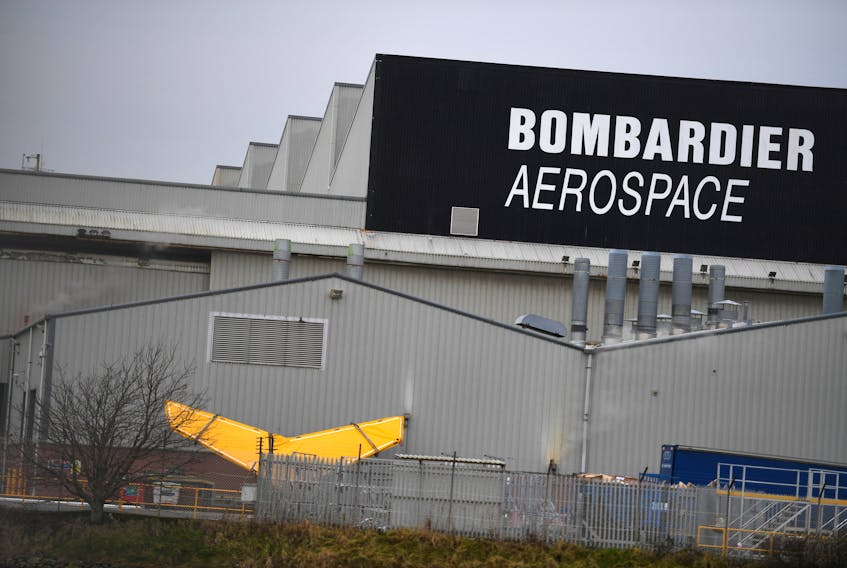In the last few weeks, we have seen major changes on the Canadian industrial scene with Bombardier Inc., once a diversified company with a large product range in each of its businesses, now concentrating only on corporate jets.
Soon to be free of its USD $9.3 billion debt, thanks to the acquisition of its rail division by European Alstom, the company will start a new but uncertain chapter in its history.
We should keep in mind that despite all of Bombardier’s troubles, its history is nevertheless filled with amazing chapters.

It all started in 1936 when Joseph-Armand Bombardier, from Valcourt in rural Québec, invented the snowmobile, to this day an essential mode of transportation for so many remote communities in Canada. In 1959, Sherbrooke University accounting student Laurent Beaudoin married Claire Bombardier, the inventor’s daughter. Beaudoin joined the family business in 1963 and became the mastermind behind a spectacular growth strategy based on the acquisition of a number of historical aerospace companies, such as Canadair in Montreal, de Havilland on Toronto, Learjet in the US and Short Brothers in Ireland, as well as German train producer Adtranz.
During the 1990s, Bombardier Aerospace became the third largest aircraft maker in the world, although its size remained modest compared to Airbus and Boeing.
One of Laurent Beaudoin’s clever moves was to increase the size of the Challenger corporate jet to create the CRJ 50 seat regional jet. This literally marked the creation of a brand new industry. Another big coup was the development of the Global Express, a luxury corporate jet with a very long range, often considered as the crown jewel of the Bombardier line.
The hope is that the latest version of this product, the Global 7500, will now ensure the company’s survival.
Bombardier has been under scrutiny because large public funds were invested in several of its business ventures, while its ownership and governance structure kept the decision power in the hands of the Bombardier-Beaudoin family.
We easily forget that the Canadian government largely recouped its investment in the 50 seat CRJ regional jet which was a huge success.
In fact, the CRJ product became so popular that Bombardier Aerospace could not answer the demand. This created a window of opportunity for Embraer, the Brazilian aircraft maker that became Bombardier’s main competitor. In addition to the arrival of Embraer on the scene, there are a number of reasons that explain the fall of Bombardier.
The company had gained an excellent reputation in the rail business after a particularly well executed metro contract in New York. While the acquisition of Adtranz in 2000 more than doubled the size of Bombardier Transport (its rail division) and gave it access to capabilities that it did not have, several of Adtranz factories did not operate at full capacity. Twenty years later, Bombardier Transport was trapped in highly customized legacy contracts that were poorly negotiated and ended up costing more than the revenues generated.
The big CSeries gamble was ultimately what brought the company down.
In the early 2000s, more and more players were competing in the regional jet industry and the sector was starting to show signs of maturity. At the same time, Bombardier Aerospace believed that major airlines were soon going to need to replace the smallest Boeing and Airbus aircraft of their fleets. This represented a business opportunity.
After a long go/no go decision process and most probably heated discussions at the board, the entrepreneurial mindset won and Bombardier went ahead with the CSeries program. This was a risky proposition on two counts.
First, this new program meant that the company would now address a completely different market: selling corporate jets to wealthy people or regional jets to regional carriers is not the same thing as dealing with major airlines. Second, it is extremely difficult for a single company to realize such ambitious programs without heavy state support.
When we hear complaints about federal or provincial subsidiaries to Bombardier, we should realize that this is nothing compared to the help that Boeing and Airbus receive.
A large portion of Boeing’s revenues come from predictable U.S. military contracts that offset the cyclical nature of civil aviation. Boeing is in a precarious situation since the grounding of the MAX 8 (following which St. John’s lost its direct connection to London). No matter how significant the financial repercussions of the MAX 8 catastrophe may be, the U.S. government will never let its national aircraft maker down. The same thing goes for Airbus which was initially part of EADS, a European “economic interest group” put together in 1970 to compete with the US and Boeing (EADS became Airbus Groupe in 2017). In the aerospace field, the competitive game is played between nations, not between companies.
The CSeries adventure combined financial fiasco and technical prowess. The aircraft was designed from scratch; the Pratt & Whitney engine and the aircraft structure were created one for the other and fit perfectly together.
As a result, the performance in terms of noise reduction and fuel consumption is better than expected, making the CSeries the most advanced civil aircraft on the market.
However, Bombardier made the mistake to launch three different programs in parallel: the CSeries, the Lear 85 (eventually abandoned) and the Global 7500, despite not having as deep pockets as Airbus and Boeing. In addition, major airlines, to which the CSeries was destined, did not want to do business with a small player that they did not know well.
Things changed as soon as Airbus got involved, invested money in the program and changed the name of the aircraft to A220. Providing that the European giant keeps its promise to maintain jobs in Canada – Airbus’ CEO also indicated that the company might bring some of its military business to our country – the fall of Bombardier might be good news for us.
We could even be thankful to the former Canadian giant and even to the Bombardier-Beaudoin to have given our country the opportunity to enter the Airbus family.
Isabelle Dostaler, PhD, is the Dean of the Faculty of Business Administration at Memorial University of Newfoundland. She writes from St. John’s









